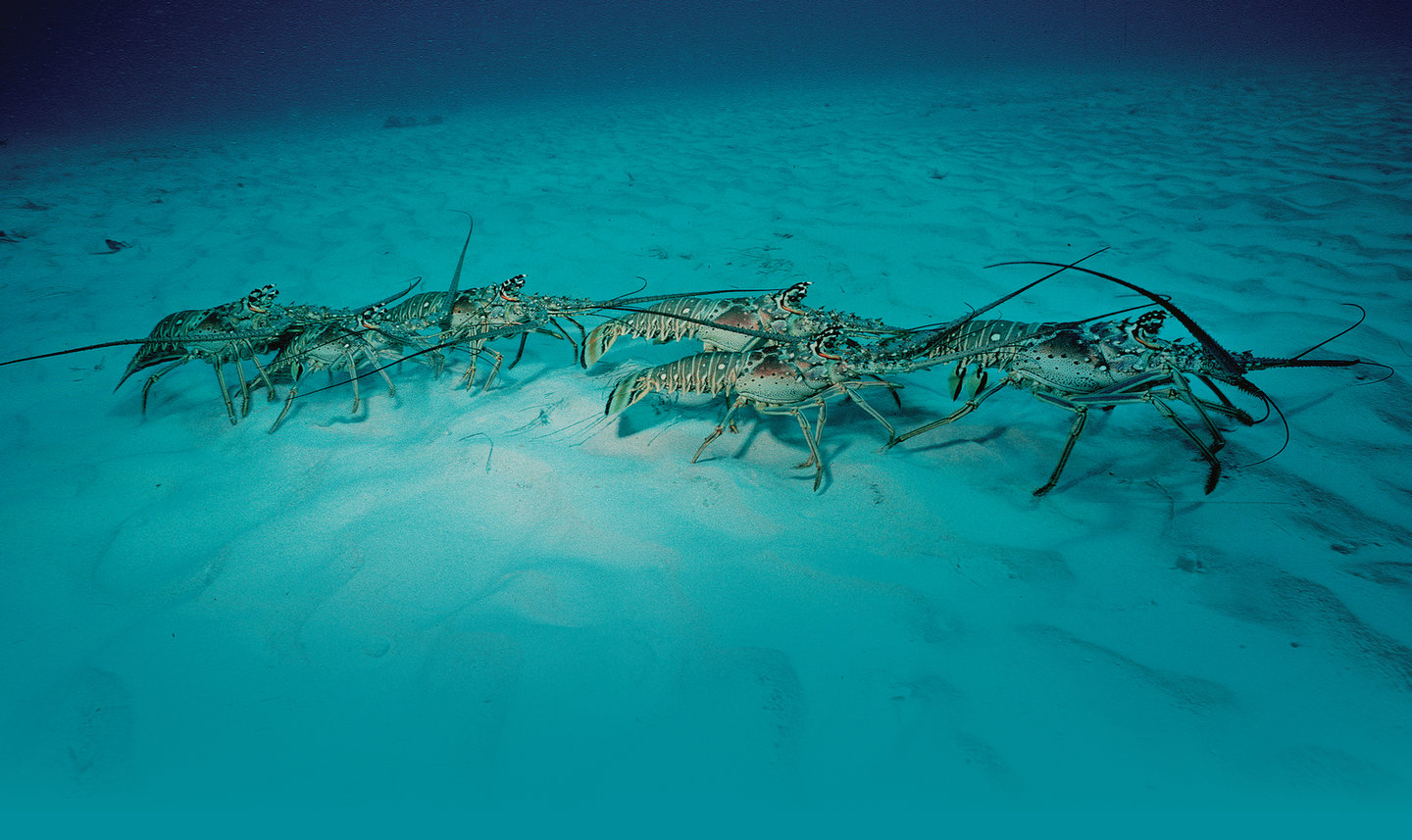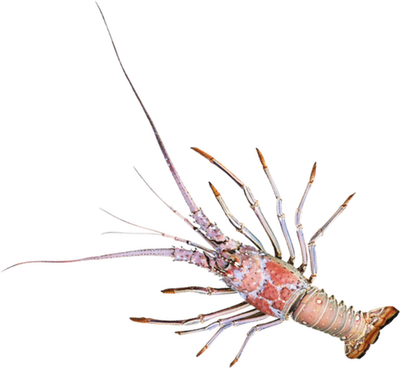
Atthefirsthintofthecomingwinterstorms,Caribbeanspinylobstersformalongchain.Asmanyas50lobstersmayjointogether.Theyconnect,conga-style,usingtheirantennaetotouchthebacksofthelobstersaheadofthem.It’stimeforthelobsters’annualjourney,or migration.
Beforehurricaneseasonbegins,theselobstersleaveshallowwaterstoseekoutdeeper,lessturbulentwater.Theygowherethewateriswarmerandwherethewavesarelesschoppy.Here,thesandybottomisstill,andfoodismore plentiful.
Toreachthisplace,theymovesingle- mindedlyandsingle-filelikeasilentarmy.Theycreepacrosstheoceanfloorforasmanyas50kilometers(31miles).Butwhatdrives them?
Weknowthatmanyanimalsmigrate.Theymovefromplacetoplace,oftenatspecifictimesorseasons.Weevenknowwhytheymigrate— tosearchforfoodorforplacestobreed.Butwedon’talwaysunderstandhowtheymigrate.Whatarethemechanismsthattriggerananimal’surgeto move?
MarineMarch
Fortheselobsters,the annualtrekisbroughtonby shorterdaysinthefallandasharpdropinwatertemperatures.Thelobstersfindtheirwaybysight,usingtheirknowledgeoftheunderwaterterrain.ButtheyarealsoguidedbyEarth’smagneticfield.
Earthhasamagneticfieldthatisundetectabletohumanswhoaren’tholdingacompass.Someanimalspeciescandetectit,however,anduseittodirecttheirmigrations.
Scientistsaren’texactlysurehowthishappens.Onetheoryfocusesonsmallparticlesofamagneticmineralcalledmagnetitethatcanbefoundinthebrainsofsomespecies.ThoseparticlesmaybereactingtoEarth’smagneticfield.Theymayactivatenervestosendinformationtotheanimal’sbrain.Scientiststhinkthatthismayhelpanimalslikethelobsters migrate.

antenna
Caribbeanspinylobsterslinktogetherwhentheymigrateacrosstheoceanfloor.